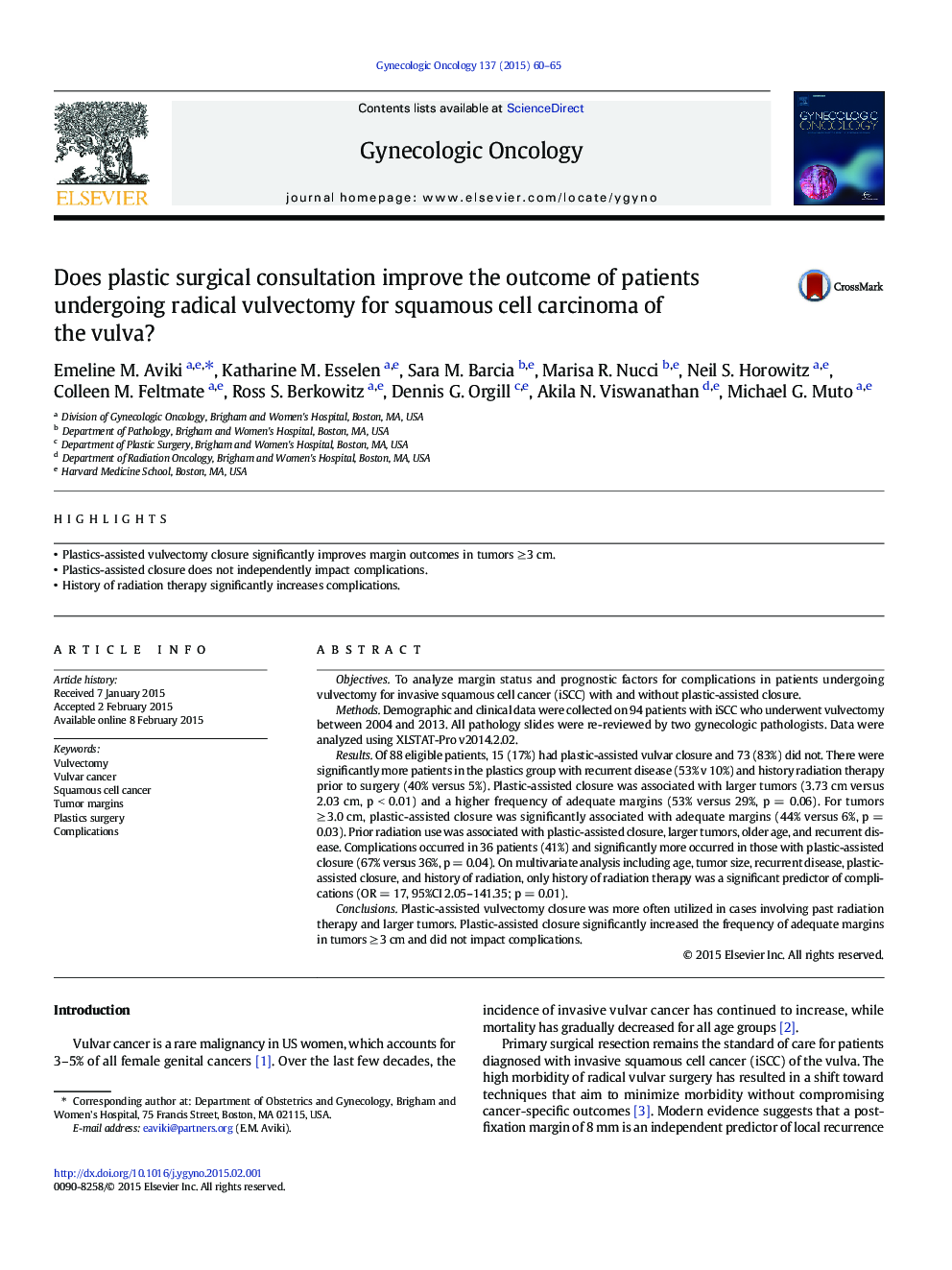| Article ID | Journal | Published Year | Pages | File Type |
|---|---|---|---|---|
| 6183161 | Gynecologic Oncology | 2015 | 6 Pages |
â¢Plastics-assisted vulvectomy closure significantly improves margin outcomes in tumors â¥Â 3 cm.â¢Plastics-assisted closure does not independently impact complications.â¢History of radiation therapy significantly increases complications.
ObjectivesTo analyze margin status and prognostic factors for complications in patients undergoing vulvectomy for invasive squamous cell cancer (iSCC) with and without plastic-assisted closure.MethodsDemographic and clinical data were collected on 94 patients with iSCC who underwent vulvectomy between 2004 and 2013. All pathology slides were re-reviewed by two gynecologic pathologists. Data were analyzed using XLSTAT-Pro v2014.2.02.ResultsOf 88 eligible patients, 15 (17%) had plastic-assisted vulvar closure and 73 (83%) did not. There were significantly more patients in the plastics group with recurrent disease (53% v 10%) and history radiation therapy prior to surgery (40% versus 5%). Plastic-assisted closure was associated with larger tumors (3.73 cm versus 2.03 cm, p < 0.01) and a higher frequency of adequate margins (53% versus 29%, p = 0.06). For tumors â¥Â 3.0 cm, plastic-assisted closure was significantly associated with adequate margins (44% versus 6%, p = 0.03). Prior radiation use was associated with plastic-assisted closure, larger tumors, older age, and recurrent disease. Complications occurred in 36 patients (41%) and significantly more occurred in those with plastic-assisted closure (67% versus 36%, p = 0.04). On multivariate analysis including age, tumor size, recurrent disease, plastic-assisted closure, and history of radiation, only history of radiation therapy was a significant predictor of complications (OR = 17, 95%CI 2.05-141.35; p = 0.01).ConclusionsPlastic-assisted vulvectomy closure was more often utilized in cases involving past radiation therapy and larger tumors. Plastic-assisted closure significantly increased the frequency of adequate margins in tumors â¥Â 3 cm and did not impact complications.
